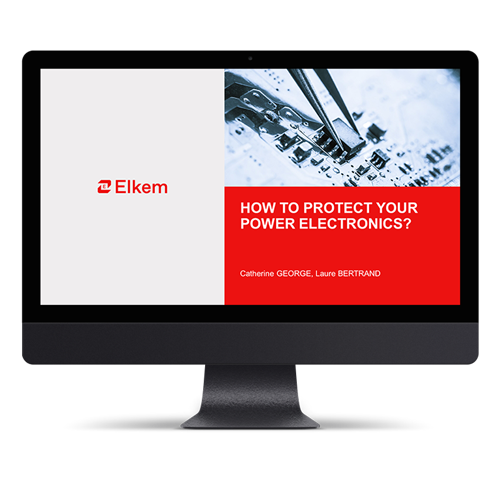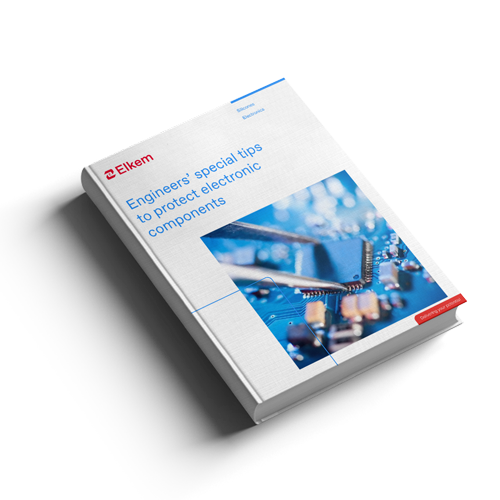- Magazine
- Digital communications
- The essential guide to Thermal Management of Electronics
The essential guide to Thermal Management of Electronics
This article is primarily addressed to electrical and electronics engineers in all industries who are involved in designing, producing and protecting critical electrical and electronic components from damage caused by thermal heat generation and transfer. It examines current and future technologies that protect sensitive electrical and electronic components against major heat-related threats, such as overheating and excessive temperature variations.
This study also provides key information for non-specialist decision makers, including Executive Managers, Industrial and Procurement Managers, as well as Financial Officers or Marketing and Salespeople, to enable them to understand how Thermal Management Systems (TMS) work and how they can improve performance, product life, and ensure safety and security for a great diversity of applications and markets and contribute to their competitiveness.
In this blog, we look at thermal management, while other related blogs examine conformal coating and encapsulation and potting. This series strives to give our readers the fullest overview of available and emerging technologies to protect their electronic products efficiently from all threats.
What are Thermal Management Systems (TMS) and why are they more essential than ever to protect electronic parts?
In the past, TMS was a priority for large scale parts and very extreme heat generating systems in transport, energy production, industrial assembly, etc. Today, these large format applications have extended their needs, such as electrical motors and batteries in EV cars and electrical transport vehicles and non-fossil fueled energy producing installations, such as wind and solar farms and nuclear power plants.
However, the new and most demanding challenge, of course, is the use of TMS in personal and miniaturized electronic devices, such as smartphones and watches, tablets, home appliances, robotics, personal AI systems, etc.
These devices contain an increasing number of electronic and electrical components, including processors, batteries, LED and HD displays and screens, 5G, WIFI and Bluetooth transmission systems, which all generate heat and are all constantly being housed in smaller spaces. Thermal management must constantly be improved to reduce the production of heat and enhance the thermal conductivity and dissipation of this heat. At the same time, since these devices are being used outdoors, they must be protected from outside sources of extreme heat or cold.
What are the main Thermal Management solutions?
Thermal Management Systems all seek to ensure performance, reliability and increased lifespan, by controlling or dissipating heat generated by the operation of the device itself and external factors, such as outside temperature. Device reliability is achieved by using a variety of Thermal Interface Materials (TIMs) made with various substances, such as greases, liquid gap fillers, adhesives, etc. These are applied in various ways, such as potting, encapsulation, gap fillers, coatings, etc. Increasingly, silicone is being used as a material of choice, either on its own in specially designed silicone elastomeric formulations or in composites that include specific fillers.
Given the wide variety of devices, as discussed above, efficient TMS solutions are constantly evolving and must be carefully selected and combined to deal with the various constraints of the device in terms of cost, power requirements, weight, size and reliability. Upstream design plays an increasingly important role, generating greater collaboration between producers of the base products and industrial manufacturers.
TIMs, which can be electrically conductive or insulating, must essentially increase insulation or reduce impedance to heat flow at interfaces and, when necessary, offer adhesion features, protection from vibrations, thermal expansion and reduction due to temperature changes, shielding against corrosive materials, etc.
In this article we summarize the five main types of solutions used in TMS:
- Potting and encapsulation are the main techniques used in TMS to protect sensitive and critical electronic components from overheating and other thermal threats, such as harsh environmental and climatic conditions, and exposure to heat and fire.
- Potting is the process of filling (partially or completely) or embedding the electronic component or assembly in an enclosure with a resinous material such as silicone. The formulations used can also contribute to improve electrical insulation, flame retardancy and heat dissipation.
- Encapsulation is a similar process to potting but differs because the component is generally dipped into a mold and then placed in a space, without necessarily filling the entire cavity. It provides efficient heat dissipation, as well as improving electrical insulation and flame retardancy.
- Structural adhesives ensure two requirements in TMS: they enable the bonding of components such as cooling plates for battery arrays in EVs and other electrically powered vehicles, as well as being thermally conductive. Silicone structural adhesives are easy to process and provide reliable and long-lasting bonds and thermal protection. They can be purpose-designed to provide the right mix of adhesion characteristics and protection against excess heat, as well ensure greater safety, because they are not combustible and act as fire retardants.
- Gap fillers are mostly used in battery packs, particularly in EV and hybrid vehicles, in heat sinks, liquid cooling and cooling plates to efficiently contribute to TMS. Depending on their formulation, they can combine multiple properties, such as the flow properties of adhesives and the mechanical and insulating qualities of potting and encapsulation materials. Gap fillers are increasingly replacing thermal pads due to their ease of processing and durability.
- Greases, gels and underfills are most often used for small and medium-sized electronic devices, typically to protect individual printed circuit boards (PCBs) and other core processing components. Underfills often complement conformal coating by structurally reinforcing parts, filling and consolidating the space beneath the components. They also act as a protective buffer, being both thermally conductive and capable of providing electrical insulation. Greases and gels can separately ensure electrical insulation or conductivity. Gels, for example, can also ensure thin bonding to accelerate heat transfer away from the component. All three of these substances are all easy to remove and rework, therefore facilitating repairability, which has become a significant advantage for both economic and ecological reasons.
- Coatings are used across the board to protect components. Plasma and silicone-based spraying is used to protect large parts, such as semiconductor equipment, gas turbines, ceramics, high-voltage lines and many industrial applications. For smaller parts in electronic devices, very thin conformal coating is the first line of defense against deterioration and oxidation of critical parts that would otherwise overheat. They are often used in conjunction with other thermal resistant materials, including all four described above in this section, to achieve optimal levels in preventing excess heat buildup.
What are the different materials that can be used for thermal protection?
Essentially, there are four major types of materials used for TMS and other key protection needs for electrical and electronic components, each with its specific features:
-
Acrylic Resins (AR) – provide very basic heat management features, as well as protection against moisture. They are quite elastic and also provide good dielectric insulation, are easy to apply and are relatively inexpensive but are not very resistant to extreme conditions and aggressive substances.
-
Epoxy resins (ER) – provide some very basic heat insulation, but they protect mainly against moisture and abrasives (being quite hard), as well as chemicals, which means they are used mainly for potting to enable very robust physical protection.
-
Silicone Resins (SR) – distinguish themselves by their versatility and the possibility of very precise formulations for TMS, whether for large components (such as EV batteries) or miniature devices (such as smartphones). They distinguish themselves by their huge temperature resistance range, (-60°C to 200°C and as high as 600°C in special formulations), far higher than most urethanes. They also offer high chemical resistance, which prevents parts from being exposed to the elements. From a processing point of view, they are easy to apply (mainly in ultra-precise manual or automated spraying), cure easily and quickly at room temperature. Another key advantage is that silicones are available in a variety of forms: RTV-2, RTV-1, foams, gels, adhesives or even gap fillers.
-
Urethane (or Polyurethane) Resins (UR) – provide average levels of thermal protection, sufficient for many applications. They are easily applied and provide good moisture and fuel vapor resistance and better chemical resistance than acrylics but require longer curing times. They are relatively difficult to dissolve for reworking or repairing because their chemical resistance requires very strong solvents, often detrimental to the underlying components to be accessed.
Performance summary of different materials for TMS and other types of protection
| Humidity Protection | Ease processing | Humidity Protection | Chemical & extreme Protection | Curing time | Dielectric protection | |
| Acrylic | + | ++ | + | - - | ++ | ++ |
| Epoxy | + | - | ++ | +++ | - - | ++ |
| Silicone | +++ | +++ | +++ | ++ | +++ | ++ |
| Urethane | ++ | +++ | +++ | + | - |
The key to determining which material is best for TMS is based on several factors, including the operating and environmental conditions of the final product, the physical properties required for the materials being used and the processing requirements and capacities of the manufacturer.
Silicones are increasingly the materials of choice for protecting sensitive electronics such as sensors, actuators, central processing units (CPUs), printed circuit boards (PCB) and other assemblies, largely because of their excellent wetting capabilities, which minimize air pockets and other imperfections.
Readers should keep in mind that, in certain assemblies, a mix of several technologies is possible, considering ease of processing, critical performance criteria for the final product and cost-effectiveness.

